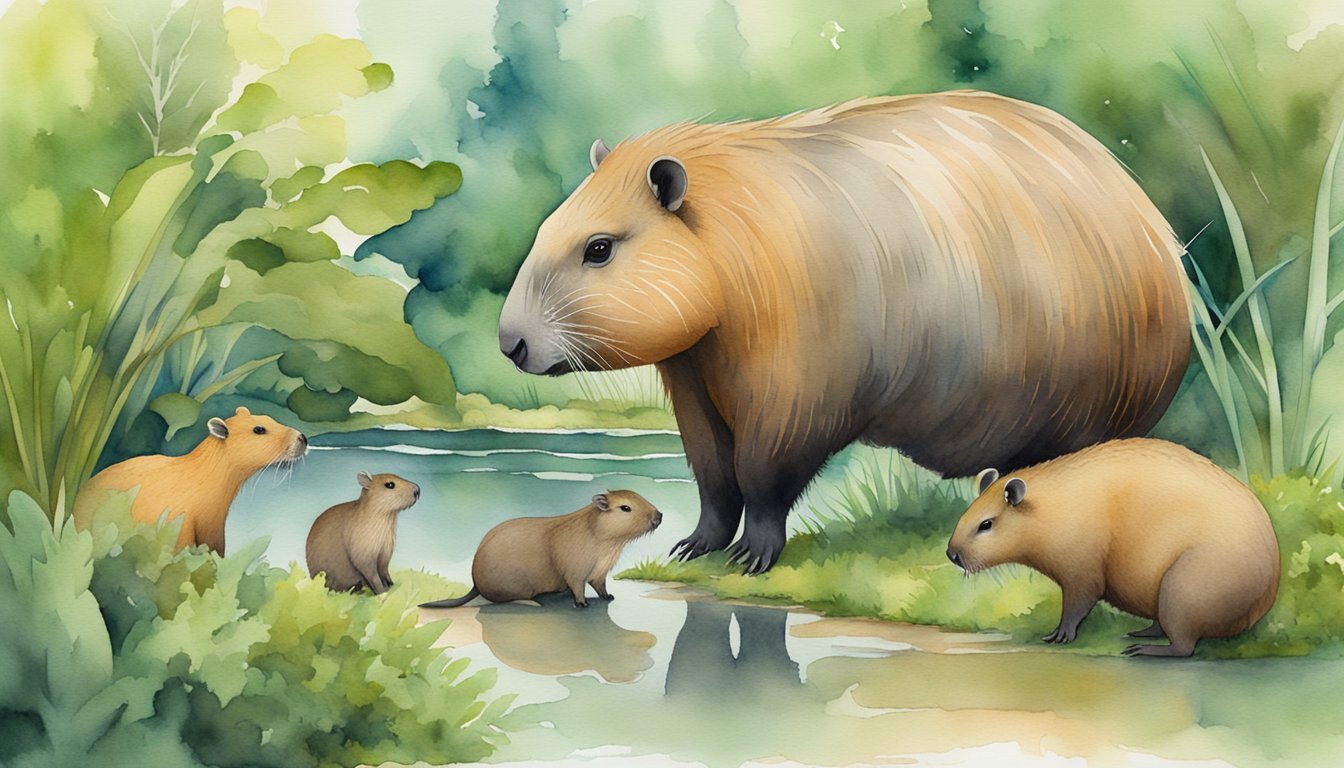Understanding Capybaras
Capybaras (Hydrochoerus hydrochaeris) hold the title of the largest rodents on the planet, with a social and semi-aquatic lifestyle that is as intriguing as their physical forms. These gentle giants, belonging to the subfamily Hydrochoerinae and the family Caviidae, showcase a wealth of unique traits and behaviors.
Physical Characteristics
The capybara’s size is noteworthy, as they can weigh up to 140 pounds and measure up to 4.3 feet in length. Their scientific name, Hydrochoerus hydrochaeris, reflects their semi-aquatic nature. Their bodies are covered with coarse, brown skin that aids in camouflage, while their small ears and nearly nonexistent tail are adapted to their habitats. A capybara’s eyes and nostrils are set high on their head, allowing them to see and breathe while mostly submerged. Essential to their lifestyle are the webbed feet, which make them excellent swimmers.
Habitat and Distribution
Native to South America, capybaras are found in various countries including Brazil, Venezuela, Colombia, and Argentina. Their preferred habitats include lakes, rivers, marshes, swamps, and the dense growth along forests and savannas. These environments provide both the water they need for survival and the dense foliage in which they can forage and hide.
Diet and Foraging Behavior
As herbivores, capybaras primarily feed on grass and aquatic plants. Their diet is crucial as it contributes to the ecosystem’s functioning, often making trails through dense vegetation that other animals can exploit. Their teeth are specially adapted to their diet, continually growing to compensate for the constant wear from grazing.
Social Structure and Behavior
Capybaras are highly social animals that live in groups that can consist of 10 to 20 individuals, often including a dominant male. These groups provide safety in numbers and help in the rearing of young. Breeding happens within these groups, and after a gestation of approximately 150 days, a female capybara can give birth to a litter of up to eight pups.
Conservation and Human Interactions

Capybaras, the giant cavy rodents native to South America and related to guinea pigs, hold a “Least Concern” conservation status, but they still face threats due to habitat destruction and hunting. Their gentle nature and unique ecological role underscore the importance of conservation measures and highlight their interaction with human societies.
Threats and Conservation Efforts
The capybara’s conservation status is officially listed as Least Concern by the IUCN, meaning the population is considered stable across most of its range. Despite this, in some areas, capybaras are threatened by deforestation, agriculture, and development leading to habitat loss.
Predators such as jaguars, caimans, green anacondas, and pumas naturally hunt capybaras, but the larger threat to their survival tends to be humans. Hunting for their meat has been a common practice, and in some areas, they are still hunted. Conservation efforts focus on mitigating these human impacts through habitat protection, legal hunting regulations, and promoting coexistence.
Capybaras in Culture and Economy
Capybaras have a unique place in the culture and economy of the regions they inhabit. Holding significance in local folklore and as a tourist attraction, these social and charismatic animals often facilitate harmonious living with humans, especially in urban settings.
Economically, while capybara meat is a commodity in certain cultures, there is a growing awareness and shift towards ecotourism, where the presence of capybaras can contribute to local economies without direct exploitation of the animal. Conservation programs sometimes intertwine with cultural and economic initiatives to ensure that the capybaras continue to be a sustainable part of both the ecology and the human communities they touch.

